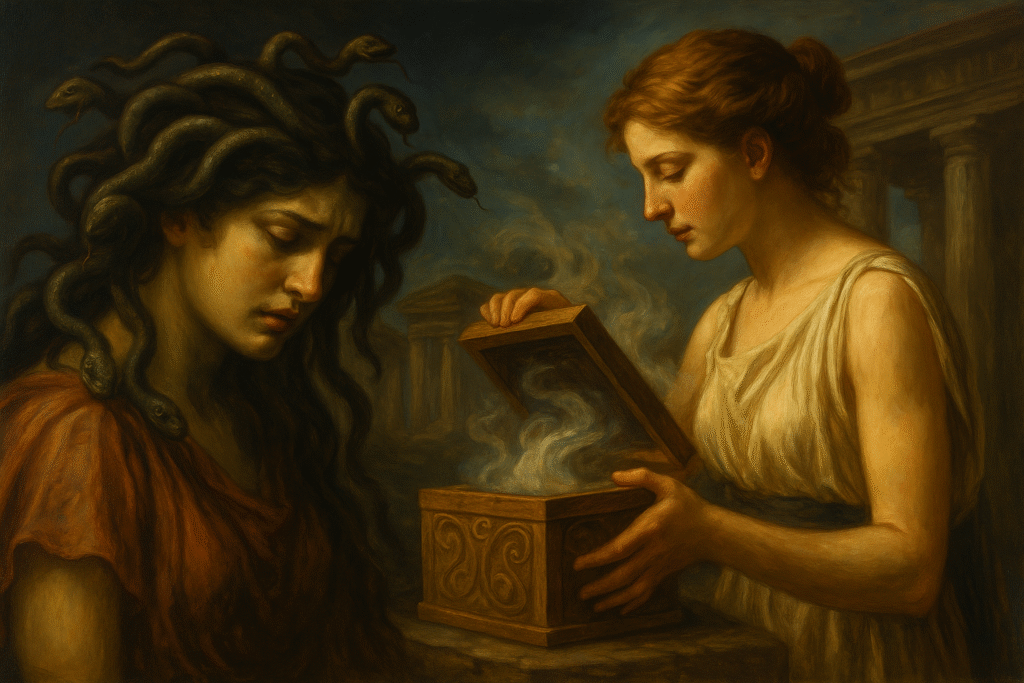An Engaging Start: Discovering Female Heroes
In the legendary labyrinth of Greek mythology, brimming with feats of courage and trials of strength, the marked absence of female heroes prompts the question: Where are the women in these epic tales? This inquiry sheds light on the gender dynamics that permeate these ancient stories, offering a fresh perspective on figures such as Pandora and Medusa. By delving into their narratives, we can uncover insights about the cultural lens through which they were portrayed and their enduring impact on how we perceive gender roles today.
Understanding the Landscape of Greek Mythology
A Brief Overview of Key Myths
Greek mythology is a complex tapestry woven with gods, demi-gods, and mortals, each playing their part in the grand narrative. These myths prominently feature figures like Zeus, Hercules, and Achilles—males celebrated for their strength and heroism. In comparison, female figures, though numerous, often occupy secondary roles. Figures like Hera and Athena are goddesses with influence but are seldom depicted as heroes in the traditional sense. This disparity invites us to consider what roles women were assigned and how these roles reflected or reinforced the gender norms of ancient Greece.
The Cultural Context of Ancient Greece
The societal norms of ancient Greece were deeply patriarchal, emphasizing male authority and valor. In this context, storytelling became a tool for reinforcing societal values. Women were largely relegated to roles that reflected their perceived societal position: Athena represented wisdom, Hera symbolized marriage, yet their narratives lacked the heroic journeys always afforded to male characters. These cultural dynamics intricately shaped how stories were told, ensuring women often played roles that were supportive or morally cautionary, rather than heroic.
The Case of Pandora: The First Woman or a Cautionary Tale?
Who Was Pandora?
Pandora, often recognized as the first woman in Greek mythology, serves more as a cautionary figure than a heroine. The tale of Pandora’s box—where curiosity leads her to unleash both hardships and hope upon humanity—illustrates how narratives were designed to reflect and enforce gender norms. Rather than being celebrated for her role, Pandora is depicted as a vessel for male-centric caution, warning against disobedience and curiosity, traits often associated negatively with women in patriarchal contexts.
A Deeper Dive into Pandora’s Symbolism
Symbolically, Pandora represents the complex interplay of curiosity and consequence. Her story challenges us to consider how female agency is portrayed; she is portrayed less as an instigator of hope and more of misfortunes. The box, a symbol of potential and the unknown, ties into themes of temptation and morality, with the narrative subtly guiding interpretations of female curiosity as dangerous. Yet, the presence of hope also offers a nuanced view, suggesting complexity in how her story might speak to deeper human truths about resilience and possibility.
Medusa: The Heroine Reimagined
Unpacking Medusa’s Myth
Medusa’s transformation from a beautiful maiden to a monstrous gorgon is a poignant example of narrative evolution across time. Initially, Medusa’s curse by Athena—punishing her for a desecration not of her own making—represents how narratives can depict women both as victims and as embodiments of fearsome power. Within her story lies a subtle tragedy, transforming her plight into a powerful testament to the potential for victimhood to be reclaimed as strength.
Medusa’s Role in Feminist Discourse
In modern interpretations, Medusa has emerged as a symbol of empowerment. Contemporary discourse reclaims Medusa from her monstrous portrayal, emphasizing themes of victimhood challenged and revenge re-envisioned. In feminist retellings, she becomes a figure who defies patriarchal definitions, challenging those who have wronged her. This contemporary lens invites a reevaluation of her story as one of endurance and empowerment, moving beyond victimization to explore narratives of personal agency and retribution.
Ancient Gender Roles in Greek Narratives
Women’s Representation in Myths
A comprehensive look at female characters in Greek myths reveals how women were either elevated as muses or vilified as monsters. Figures such as Helen of Troy, whose beauty sparked the Trojan War, epitomize how women were often deprived of full agency, reduced to symbols rather than characters with heroic potential. This dichotomy serves as a mirror reflecting broader gender norms, positioning women either as divine figures inspiring male heroes or as cautionary tales warning of female influence.
The Impact of Ancient Gender Norms on Heroism
Heroic narratives in Greek mythology were typically male-dominated, as heroism was closely tied to the masculine-coded virtues of strength and bravery. Stories like those of Hercules or Theseus illustrate this notion, depicting adventures and triumphs predominantly accessible to male figures. This pattern underscores the cultural perception of heroism, often excluding women by confining their influence to spheres dictated by societal expectations rather than personal valor.
The Implications of Rare Female Heroes
What Does It Mean for Modern Readers?
The scarcity of female heroes in ancient myths impacts contemporary literature and storytelling by perpetuating traditional gender roles. This exclusion challenges modern narratives to reimagine and incorporate diverse perspectives. By scrutinizing these mythological tropes, today’s storytellers are increasingly advocating for inclusive narratives that explore complex female characters and their unique stories, thereby enriching the fabric of modern literature.
Reimagining the Narrative for Future Generations
Inclusive narratives play a crucial role in education and literature by offering more nuanced portrayals of gender and heroism. Modern adaptations, like novels and films retelling ancient myths with empowered female leads, challenge past narratives and provide new role models for future generations. Such reimaginings are essential not just for broadening representation but for fostering a deeper, more equitable understanding of heroism and gender roles.
Conclusion: Rethinking Heroism in Greek Mythology
The rarity of female heroes in Greek mythology unveils profound implications about historical narratives and their impact on gender perceptions. By understanding these dynamics, we illuminate ongoing discussions on gender and representation in storytelling. Reflecting upon and rethinking these ancient tales provides valuable insights that help forge pathways toward more inclusive narratives, where women are cast not just as muses or monsters, but as protagonists in their own right.
Frequently Asked Questions
1. Why are female heroes so infrequent in Greek mythology?
The scarcity is largely due to the patriarchal structure of ancient Greek society, which influenced storytelling to celebrate male valor while portraying women within restrictive roles.
2. How do modern interpretations of Greek myths differ regarding female characters?
Contemporary interpretations often seek to reclaim and empower female figures, emphasizing their resilience and challenging traditional patriarchal views.
3. What role does Pandora play in feminist discussions?
Pandora’s story offers a lens through which to discuss themes of female curiosity and agency in patriarchal narratives, often sparking debate on gender and symbolism.
4. Is Medusa considered a hero in modern retellings?
In modern interpretations, Medusa is often seen as a symbol of empowerment, her narrative reclaimed to emphasize resistance and personal agency.
5. How can educators use these myths to discuss gender roles?
Educators can leverage these myths to highlight historical gender norms, sparking discussions on evolving perceptions and the importance of inclusive storytelling.
6. Are there other female figures in Greek mythology that are considered heroes?
While rare, figures like Atalanta and Penelope offer glimpses into heroism displayed by women, embodying strength and perseverance.
7. What is the significance of gender roles in storytelling?
Gender roles shape narratives, influencing character portrayal and the values emphasized, making it crucial for understanding cultural and historical contexts.
8. How have feminist scholars approached these myths?
Feminist scholars often critique traditional interpretations, advocating for reinterpretations that emphasize female agency and challenge patriarchal narratives.
9. Can Medusa’s story be seen as a form of empowerment?
Yes, modern retellings often reinterpret Medusa as a figure of empowerment, highlighting themes of defiance and the reclaiming of agency.
10. What are some recommended readings about gender in mythology?
Works by authors such as Adrienne Mayor and Mary Beard explore these themes, offering in-depth analyses and interpretations of gender roles in mythology.
As we unravel these ancient tales, consider how these narratives shape our understanding of gender and heroism—past, present, and future.

